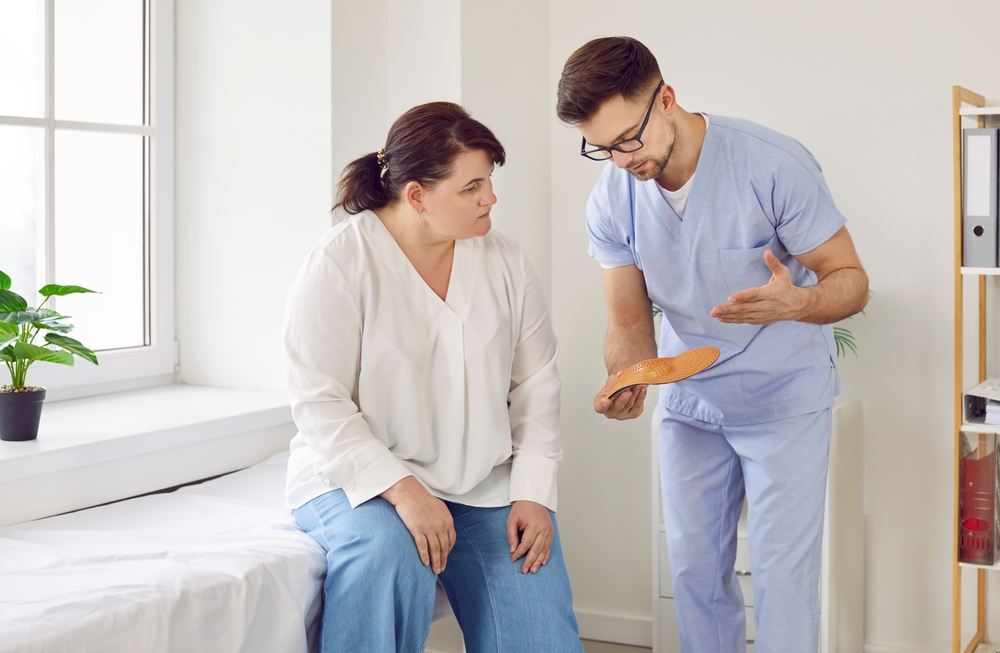Do you think your heel pain is severe due to your excessive weight? If yes, you’re not wrong. Heel pain and obesity go hand in hand, and one impacts the other. Most of the heel pain is caused by a heel spur, which is a foot condition that causes a bony growth that extends between the heel bone and the arch. It often occurs in the front and underneath the heel, which affects other parts of the foot. It doesn’t always cause pain, but your weight can impact the pain intensity and severity. However, this impact on the heel can be managed with certain strategies. Learn how weight impacts heel pain and what you can do about it in this article. Log on to www.doralhw.org for a consultation.
Types of heel spurs and their examination
Spurs are also classified into 3 distinct types:
- Type 1: These are large but asymptomatic because the angle of growth is such that the spur growth through weight-bearing or inflammatory changes is stopped.
- Type 2: This type is also large and painful due to the pitch of the spur being changed by a depression of the longitudinal arch. This causes the spur to become the weight-bearing point, which sometimes causes intractable refractory pain.
- Type 3: This type has a tiny amount of proliferation and creates an irregular and jagged outline, which, accompanied by an area of decreased density around the origin of the plantar fascia, indicates a subacute inflammatory process. All heel spurs start in this manner but can only end up becoming symptomatic at this stage because the etiologic factors are acute.
During heel spurs examination, some aspects need to be considered when performing the clinical examination. It includes:
- Is the range of motion limited in the ankle and foot especially?
- Is there any tenderness or deformities that can be felt on palpation (in combination with the dorsiflexion)?
- Is there any atrophy on the heel pad in contrast with the other foot in combination with reduced muscle strength?
- Is there any swelling?
- Sensation loss/alteration.
- Presence of hyperesthesia/ dysesthesias of the tibial nerve.
- Are any skin tears visible on the foot?
- Foot alignment difference in comparison with the other foot?
- Gait evaluation.
- Aggravation of weight-bearing?
How does weight affect heel pain?
Being overweight or obese can lead to multiple foot issues which lead to heel pain, including:
- Increasing weight puts a lot of pressure on the heel leading to inflammation of the fibrous tissue and causing intense heel pain.
- Being overweight can create gait changes. These bony growths can occur due to plantar fasciitis. This causes heel pain when standing or walking.
- Obese and overweight people who spend a lot of time standing can experience tiny cracks in the heel bones, which can lead to swelling and foot pain.
- The extra weight on the feet also makes tendons weak and makes the arch collapse which leads to plantar fasciitis that causes heel pain.
- Excess weight leads to tendon inflammation which further causes heel pain.
- Excess weight can create bone spurs which lead to extra stress and friction between bones that cause heel pain.
- Weight impacts your feet if you have arthritis. 1 out of 3 obese people are diagnosed with arthritis, which can break down the cartilage between joints, without them your bones collide into each other and cause intense heel pain at every movement.
What can you do?
You can treat your heel spurs pain at home with a combination of these methods:
- Orthotics:
Orthotic shoe inserts can be immensely helpful in managing heel spur symptoms because they can decrease the load on the heel and support the arch and heel to lower pain. It also provides more cushioning between the heel and the ground which makes it easier to walk. You can get softer and thicker orthotics to decrease the weight load on the calcaneus bone even further, which significantly reduces pain linked with heel spurs.
A clinical study found that 10 out of 16 participants with calcaneal spurs reported a 70 to 100% decrease in their pain after using orthotics that increase the heel height and reduce the impact during weight-bearing activities. Orthotics also play a significant role in treating plantar fasciitis that often occurs along with heel spurs, a systematic review of the study of 19 clinical trials that include 1660 participants reported that foot orthotics lower the plantar heel pain in adults who use them for weeks. Another clinical trial found that orthotics work better than non-steroidal anti-inflammatory medications, heel cups, or corticosteroid injections. So, you can try either over-the-counter orthotics or custom-made orthotics according to foot size and shape.
- Strapping:
You can use athletic or kinesiology tape to provide arch support and stabilize the foot structure.
- Exercise:
Stretching exercises are a good option that you can perform at home to warm up your plantar fascia and stretch sore muscles and tight ligaments to prevent injuries and reduce pain. Certain types of stretches you can add to your routine to improve pain and inflammation in your heel and calf areas are:
- The calf stretches against the wall.
- Calf stretches on steps.
- Seated foot flexes.
- Towel grabs with your toes.
- A tennis ball or round bottle foot rolls.
- Shoe change:
If you wear high heels or ill-fitted shoes then it severely affects the way your body weight is put on your feet which leads to the development of heel spurs, and if not corrected, it aggravates your symptoms even further. So, you should make sure that the footwear you wear has a perfect fitting & size, is suitable for the activities you perform, and has dense cushioning to provide shock absorption. If you’re an active person who participates in any kind of high-impact activity for long periods, you should change your sports shoes every few months or replace the insoles with shoe inserts to provide support to your heels.
Your weight has a significant impact on heel spurs by increasing the risk of other problems that increase heel pain. However, using orthotics, strapping, stretching exercises, and shoe changes can significantly lower the pain and impact of weight on the heels, which makes your daily weight-bearing activities easier.
If you need help with heel spurs, visit our podiatry clinic in Brooklyn to get professional medical help. Call us to book your appointment now!!!
Doral Health & Wellness employs Podiatrists with extensive education and expertise. Trauma to the tendons, muscles, and bones of the foot is quite common, as are infections secondary to systemic diseases. It’s not a promising idea to put off seeing Foot Doctor Brooklyn until you’re in a lot of pain. Our address is 1797 Pitkin Avenue, New York, NY 11212. To make an appointment, please call +1-347-384-5690 or send an email to info@mainwebsite.dialysisny.com.






